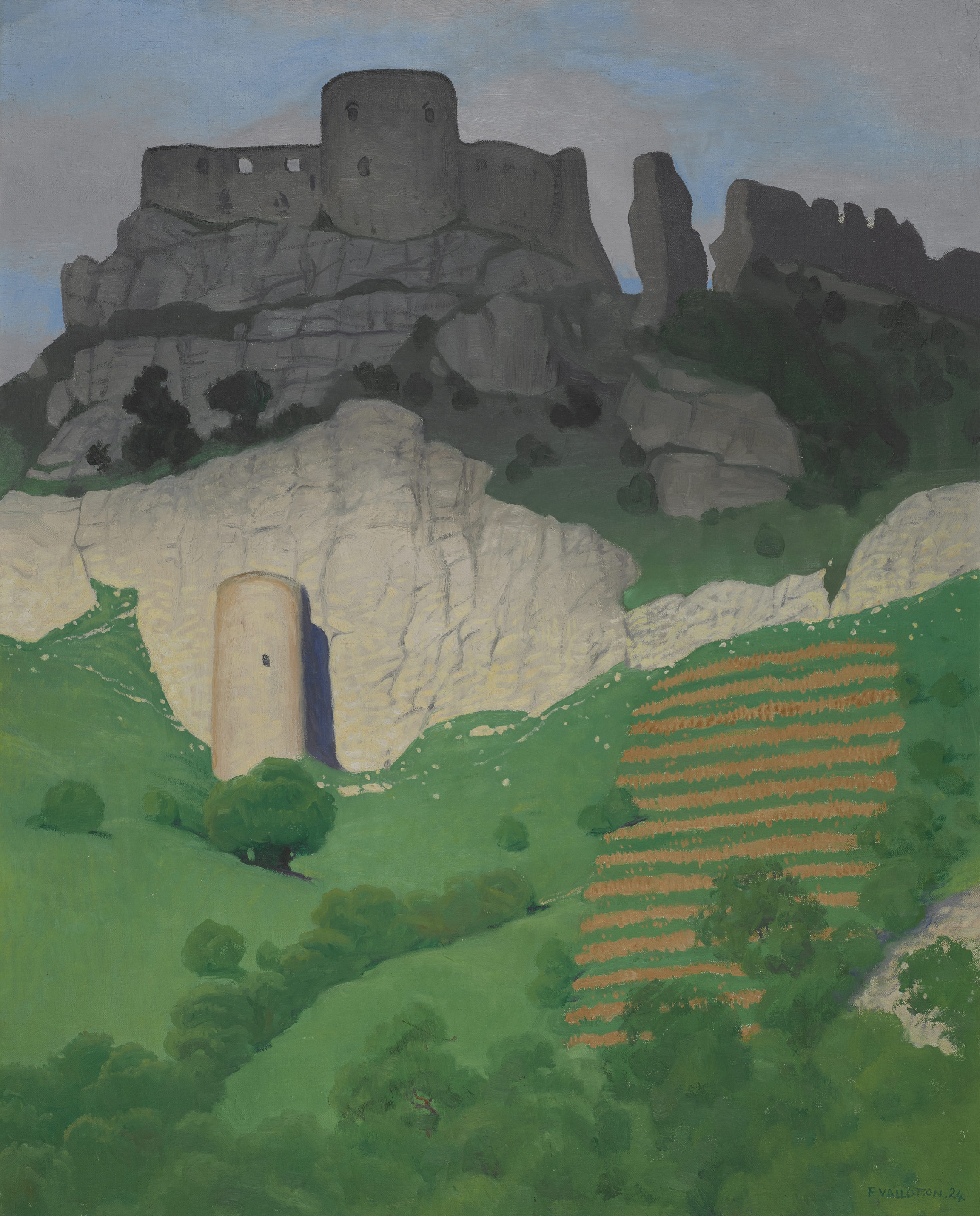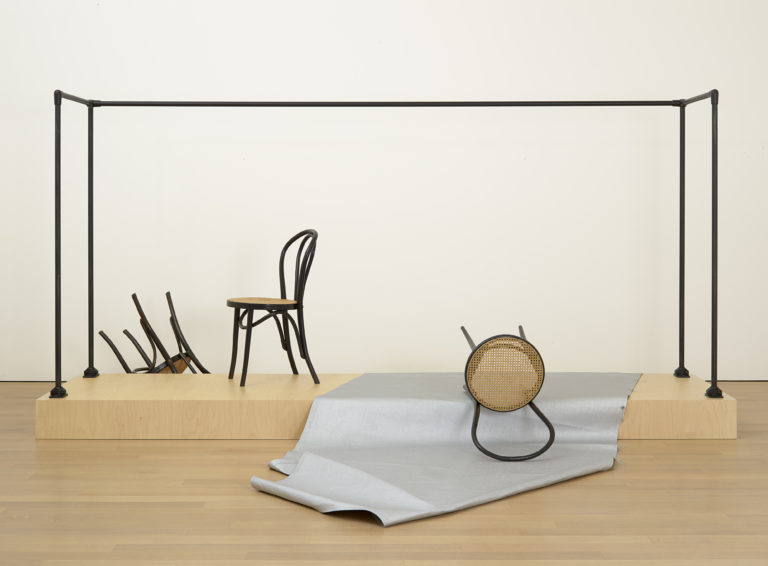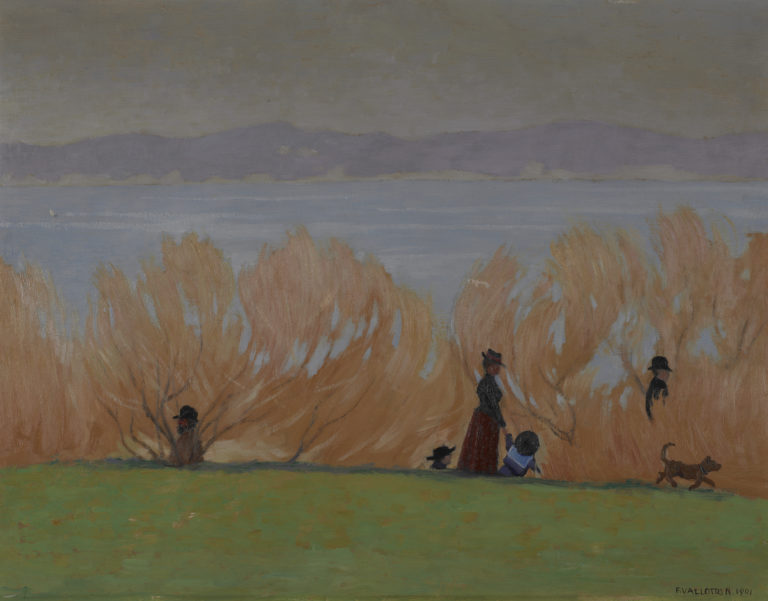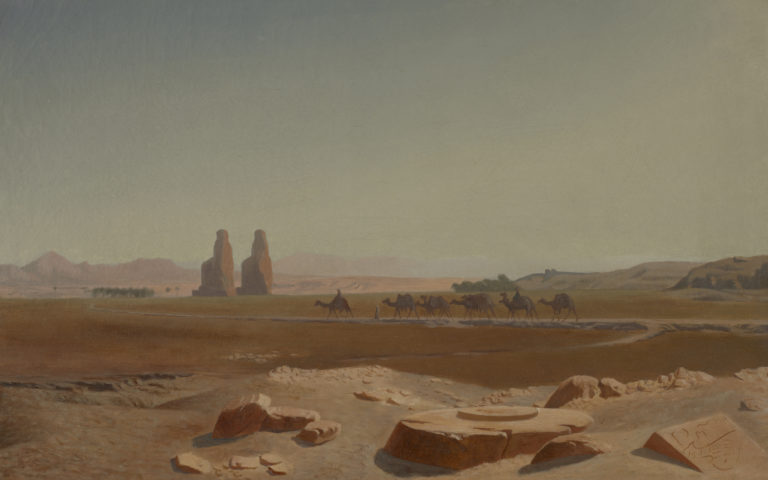Exposé actuellement
The CollectionBibliography
Marina Ducrey, with the collaboration of Katia Poletti, Félix Vallotton, 1865-1925: l’œuvre peint, 3 vol., Lausanne, Fondation Félix Vallotton, Zurich, Institut suisse pour l’étude de l’art, Milan, 5 Continents Editions, 2005: n. 1600.
Félix Vallotton, 1865-1925: Honfleur et la Normandie, exh. cat. Honfleur, Musée Eugène Boudin, Arcueil, Anthèse, 1999.
Sasha M. Newman (ed.), Félix Vallotton, exh. cat. Lausanne, Musée cantonal des Beaux-Arts, Paris, Flammarion, 1992.




In 1924, when travelling to Honfleur, where he rented a villa for the summer in 1909, Félix Vallotton stopped at Les Andelys, a village on the banks of the Seine overlooked by the ruins of Château Gaillard.
To paint this fortress, built in 1196 by Richard the Lionheart, King of England and Duke of Normandy, Vallotton scrupulously studied its composition. His initial pencil drawing is now in the Museum collection.
The exaggeratedly steep upward view, the way the composition separates the château from its modern surroundings, the synthetic approach to the forms with their supple lines and curved extremities (characteristic of the painter’s work in the 1920s), as well as the strong contrasts between light and shadow, all help create an image of the site that is at once mysterious and unreal. By leaving the upper part of this white limestone château in darkness, and by putting the sky, ruin and hill all on the same plane, Vallotton unrolls before the viewer a kind of aural tapestry in strident colours.
Vallotton was fascinated by ruins as witness to the disappearance of civilisations both ancient (‘Roman ruins are awe-inspiring’, he wrote to his brother Paul in May 1907) and contemporary, like the ones created by the First World War. The ones at Les Andelys offered an exemplary setting. Indeed, the small town below was also of interest to him as the birthplace of Nicolas Poussin in 1594. That master of classicism had elevated landscape to the level of history painting by distancing himself from the observed view in favour of a composition recreated by thought and the imagination. Vallotton followed his footsteps. In 1916, the year he travelled to Les Andelys for the first time, he mentioned in his Journal the notion of the ‘historical landscape’, which was now central to his art and is inseparable from the figure of Poussin.